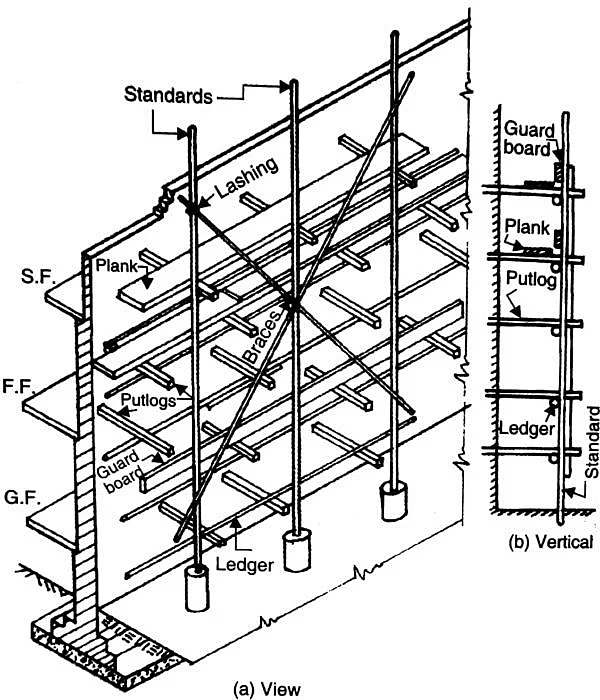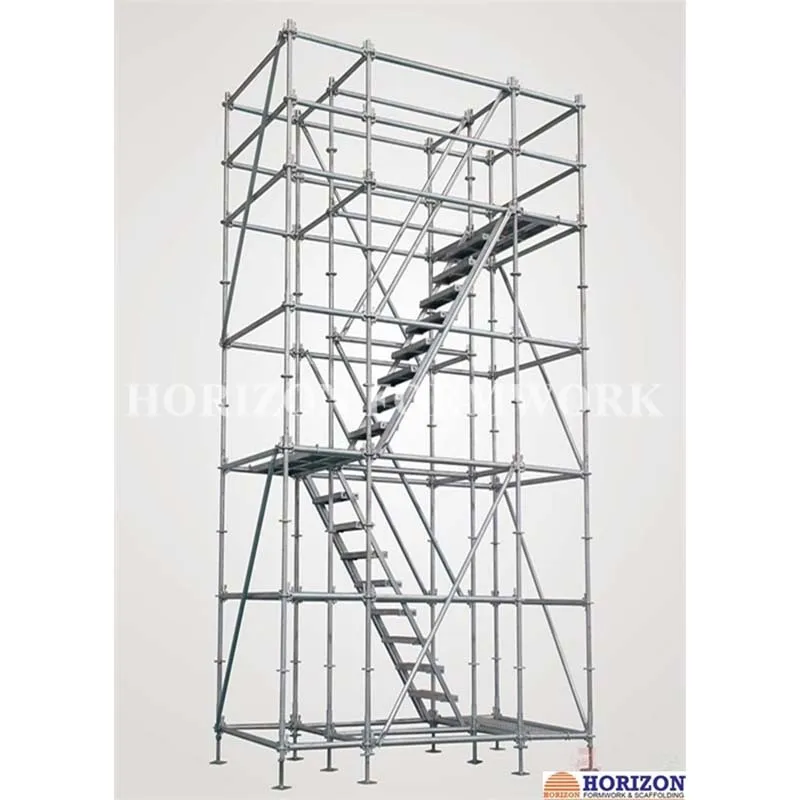Mei . 27, 2024 09:20 Back to list
What Is Scaffolding
The use of scaffolding dates as far back as the stone age—in fact, there’s evidence that scaffolding was used over 17,000 years ago by those who made the famous paleolithic cave paintings at Lascaux.
Images of scaffolding have been found on ancient artifacts such as the Berlin Foundry Cup, a Greek drinking cup made in the 5th century BC.
Peoples as diverse as Nubians, Egyptians, and Chinese have documented the use of scaffolding for constructing tall buildings, using rudimentary scaffolds made of wood and tied at the top with ropes.
In the modern age, scaffolding has developed far beyond these early versions, and now comes in several different designs made from several different types of materials.
This article will cover how scaffolding is currently used, its types and parts, how to make it, navigating rental versus purchasing, and close out with a look at how new drone technology is helping workers across various industries significantly reduce their need for it.
[Scaffolding is commonly used by inspectors for non-destructive testing, also known as NDT. Learn more about NDT in this in-depth guide.]
What Is Scaffolding?
A scaffold, also called scaffolding or staging, is a temporary structure that allows people to stand on a stable platform for work at height or in hard-to-reach places.
These temporary structures are often used in constructing, maintaining, or repairing buildings, bridges, and other man-made structures by supporting work crews and materials.
THE BENEFITS OF SCAFFOLDING
There’s a reason scaffolding has been used for thousands of years—it works. To this day, scaffolding remains one of the most useful and efficient ways for people to work at height.
Here are the primary advantages to using scaffolds for work at height:
-
Access. Scaffolding can allow unhindered, stable access to almost any area of a structure
-
Balance. Scaffolds put workers on a firm footing, giving them the ability to balance themselves in different positions while working.
-
Ease of construction. Perancah is relatively easy to assemble and disassemble, and can be put up and taken down fairly fast.
-
Long-lasting. Most scaffolds can last for a very long time, whether they’re made from wood or from steel.
-
Safety. Safety is one of the most significant advantages of scaffolding, since it gives workers a stable platform for their work. That being said, the ideal solution for work at heigh is to reduce or even remove the need for a person to be present—in the last section of this guide, we’ll cover how drones can help inspectors reduce their need to work at height.
-
Serves as a bridge. A number of construction activities require workers to take long and winding routes to reach certain locations on the job site, which is an enormous waste of time. Bridging points in scaffolding can help solve this problem by reducing the distance that workers have to travel.
THE DANGERS OF WORKING ON SCAFFOLDING
Any time a person has to work at height there is a risk associated with the work, and work on temporary structures like scaffolding is no different.
According to OSHA (the U.S. Occupational Safety and Health Administration):
-
Scaffold-related accidents cause about 4,500 injuries and 60 deaths in the U.S. each year.
-
Falls from scaffolding account for approximately 25% of all workplace fatalities.
-
Almost 72% of those injured attributed their accident to the planking or support giving way, to slipping, or to being struck by a falling object.
-
The most common safety violation on construction sites is inadequate fall protection training.
This data is just for the U.S. Extrapolating from these numbers to estimate global data, we can see that there are probably hundreds of deaths and tens of thousands of injuries related to work on scaffolding around the world every single year.
Given how common work on scaffolding is, the injury rate is not alarmingly high. But it is worth noting that scaffolding work carries inherent risks, and that, if you can avoid that work, you will improve safety for workers
Wondering what the most common dangers are associated with work on scaffolds?
Here are the most common:
-
Defects. Scaffolding-related accidents are often caused by faulty scaffolding. Some examples of defects include compromised steel tubing is compromised or screws not lining up as they should.
-
Falling objects. Falling objects like tools, construction materials, or debris are a common cause of injury for those working on staging. To avoid injuries associated with falling objects, a best practice is to provide a cover for each level of scaffolding.
-
Weather. It can be extremely dangerous to work at height on a partially-constructed building when the weather is changing. Rain or snow can make the planking slippery, and temperature fluctuations can compromise attachment points and cause planks to loosen, crack, and fail.
-
Ignoring safety standards. Numerous other factors can lead to serious and fatal accidents, including overloading scaffolding and placing scaffolding too close to hazardous energy sources.
-
Inadequate training. Work on scaffolding and constructing scaffolding both call for specialized training. Scaffold builders and erectors must be trained in scaffolding construction and safety standards for the particular scaffolding they are erecting, and scaffold workers must be knowledgeable about the risks associated with scaffolding.
-
Inadequate or weak planking. Scaffolding for all types of work must have sturdy planking for worker safety. Fall risks can result from weakened or inadequate scaffolding supports, posts, mast climbers, pump jacks, and other mechanisms.
-
Inexperience, incompetence, and negligence. It’s extremely dangerous to work on a construction site with individuals who lack training or experience, or don’t take safety risks seriously. The negligence of coworkers can be especially dangerous when scaffolding is involved.
-
Insufficient supply of safety equipment. It is still necessary to provide workers with access to appropriate safety equipment even when scaffolds are designed, manufactured, and constructed properly.
-
Poor construction. Accidents on construction sites are often caused by improper scaffolding construction, which includes failing to attach all attachment points properly, failure to install bracing, or failure to install guardrails.
-
Poor maintenance. To remain structurally sound scaffolding needs to be properly maintained. Old materials can wear out with time, and slippery surfaces and other safety hazards can also occur as a result of inadequate maintenance.
Ringlock Scaffolding System
Uses of Scaffolding
Scaffolding is used for a variety of activities these days. Here are some of the most common uses of scaffolding:
Cleaning
Workers commonly can stand on scaffolding to clean windows and other parts of skyrise buildings.
Construction
Scaffolding can be crucial for construction, since it allows workers to stand at height on a stable surface. This is especially true for skyscrapers and other high rise structures, but its use is also common for construction work done closer to the ground.
Industrial inspections
Inspections are one of the top uses of scaffolding, since scaffolding allows inspectors to reach areas they couldn’t otherwise access in order to perform visual inspections or other kinds of NDT testing.
Inspectors commonly use internal scaffolding or other temporary structures for internal inspections, like those performed inside huge industrial boilers or pressure vessels, as well as for external inspections. Regardless of the specific inspection, the use of the scaffolding is the same—it allows inspectors to stand at height and conduct various types of testing in order to satisfy inspection requirements.
Maintenance
Inspections are typically the first step in a maintenance process, since they uncover areas that may require maintenance. After inspectors find these areas, maintenance workers will address those defects by standing on scaffolding to perform their work.
Other uses
Various types of scaffolding are also used in:
-
Art installations
-
Concert stages
-
Exhibition stands
-
Grandstand seating
-
Observation towers
-
Shoring
-
Ski ramps
Scaffolding Parts
Here are all the parts used to make scaffolds:
-
Standards.This is a framework that consists of vertical members supported on the ground, on drums, or embedded into the ground.
-
Ledgers. Tubes with a case wedge fixing device on their end that are positioned horizontally between two standards, defining the length of the scaffold bay.
-
Braces. Braces are fixed diagonally to the standards.
-
Putlogs. A putlog connects the wall being worked on and the ledger. A putlog hole is made in the side of a building to receive a putlog.
-
Transoms. A transom is a type of ledger putlog that is supported by both ledgers.
-
Bridle. Bridles support one end of the putlog and are used to bridge an opening in a wall.
-
Boarding. During the working process, boarders serve as horizontal platforms for supporting workmen and materials.
-
Guard rail. A rail set up at the same level as a ledger.
-
Toeboard. A parallel set of boards, supported on putlogs, which provides protection at the working platform level.
-
Ladder scaffolding. Scaffolding ladders allow workers to ascend and descend the constructed scaffold easily.
-
Scaffolding wheels. Wheels at the bottom of the scaffold that allow easy movement of the scaffold from one place to another.

-
Timber Beam H20 for Agricultural Buildings
BeritaJul.21,2025
-
Tie Rod Concrete Formwork for Bridge Construction
BeritaJul.21,2025
-
Table Formwork for Slab Edge Protection
BeritaJul.21,2025
-
Load Calculations for Wall Formwork System
BeritaJul.21,2025
-
Concrete Column Form Work Systems Productivity Tips
BeritaJul.21,2025
-
Beam Slab Formwork for Ribbed Slabs
BeritaJul.21,2025
